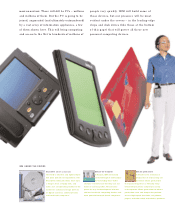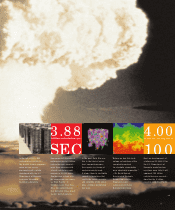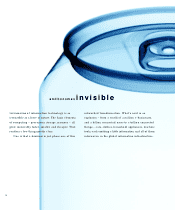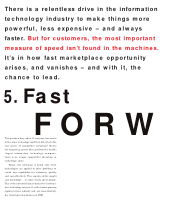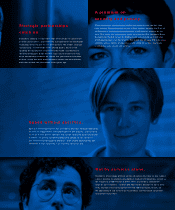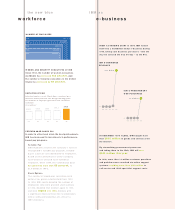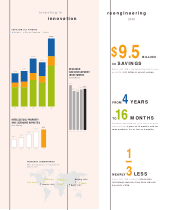IBM 1998 Annual Report Download - page 39
Download and view the complete annual report
Please find page 39 of the 1998 IBM annual report below. You can navigate through the pages in the report by either clicking on the pages listed below, or by using the keyword search tool below to find specific information within the annual report.
In the fall of 1998, IBM
delivered an RS/6000 SP –
the world’s fastest computer,
twice as fast as any
previously built – jointly
developed with the U.S.
Department of Energy’s
Lawrence Livermore
National Laboratory.
How powerful? Capable of
performing nearly 4 trillion
calculations per second –
more than a person with
a hand calculator could
perform in 63,000 years.
Another way to look at it:
the supercomputer known
as “Blue Pacific” is
50 times faster than Deep
Blue, the supercomputer
that defeated chess grand-
master Garry Kasparov.
In the post-Cold War era,
this is the kind of entry-
level computing power
the experts in charge of
nuclear arsenals need.
It allows them to run highly
complex simulations that
certify the safety, security
and reliability of the stock-
piles – without performing
live tests.
“Before we had this tech-
nology, calculations of the
complexity required
for stockpile stewardship
were absolutely impossible.”
– Dr. David Nowak,
Accelerated Strategic
Computing Initiative
Program Leader,
Lawrence Livermore
National Laboratory.
Next up: development of
a follow-on RS/6000 SP for
the U.S. Department of
Energy to model nuclear
reactions more fully. It will
approach 100 trillion
calculations per second –
dwarfing the 4 trillion
possible with Blue Pacific.
37
3.88
trillion calculations per
SEC 4.00
TERAFLOPS,ON THE WAY TO
100




